Kangaroo Island’s farmers on dark times, disaster and saving their mates
Sam Mumford’s mental anguish in the wake of the brutal Kangaroo Island bushfires was much harder to see than the razed landscape or devastated wildlife. But opening up ultimately saved his life.
SA Weekend
Don't miss out on the headlines from SA Weekend. Followed categories will be added to My News.
After the last of the embers were extinguished on his three razed Kangaroo Island farms, Sam Mumford stood frozen in the devastation of his loss.
The Black Summer bushfires of 2019-20 had claimed his 4500 sheep, 850 cows and calves, 148km of fencing and countless sheds.
The 47-year-old had no idea how or where he would start to rebuild his life.
It was only after his neighbour and good mate Peter Lock forced words in his ear that Mumford found strength to confront his new reality.
“Locky had lost his house and his potato farm but he is a stubborn bastard,” Mumford smiles. “He went out and grabbed a star dropper and banged it in the ground and said ‘Righto, we start here. Just go from here, mate.’
“We went out and started shooting sheep, shooting cattle and began the clean-up.
“It was the only way to deal with it – just getting a little bit further every day and seeing how you go.
“I wasn’t going to let the fire beat me. I wasn’t going to give it the satisfaction.”
It was with this sense of ardent determination and stoic mateship that many of the victims of the Black Summer bushfires dealt with their grief.
In the shock of the unfathomable firestorm that burnt half the island, the only way forward was in the work to rebuild. But it is what happened in the years that followed that has defined how the island’s people have dealt with the mental pain of surviving such horror.
The scars of the burnt landscape are still visible; less so, the emotional scars of the men and women who dealt with the fallout.
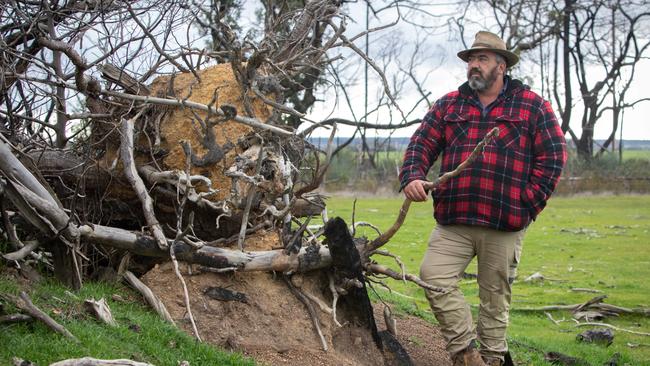
Despite the isolation in the west of the island, the community is bound like family.
Mumford and Lock saw signs of depression in their peers and acknowledged that the old ways of ignoring or hiding the inner turmoil wasn’t going to prevent loss of life.
“There’s always been this mentally that ‘We’re farmers, mate – we don’t talk about that sort of stuff’,” Mumford says.
“But one suicide is too many. We saw people self-medicating and taking part in anti-social behaviour.
“I was telling everyone that the only way we’ll get through this is as a community, but in my own head I was thinking, maybe if the whole community gets through it, I will too.
“We held a lot of campfire catch-ups, just getting together with mates to chat because people haven’t been thinking straight.
“I try to go out of my way to make sure that other blokes are OK because if I can help them maybe I’m being helped too.
“This event has changed people. You can’t bottle shit up because if you do it’s going to end badly.”
For Mumford, it almost did.
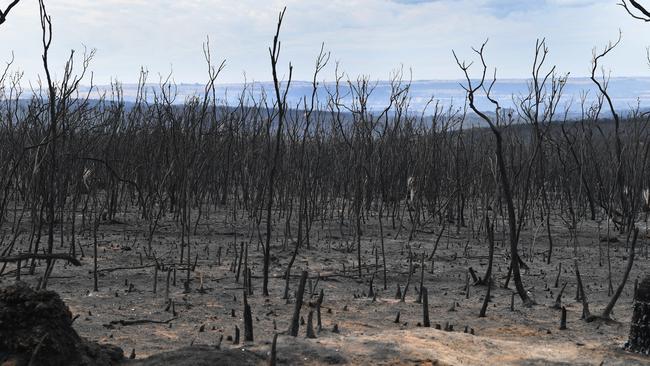
About six months after the fires, the CFS volunteer and island Councillor started a period of intense insomnia.
“It might sound stupid but after we’d fully rebuilt everything and restocked the farm I just lay in bed one night and I thought, ‘We’re done. The family is OK, I’m not needed here anymore. I’ve got three boys and they’ll be right without me’,” Mumford says.
“That caused some pretty dark times and I had some terribly dark thoughts.
“The hard part was knowing that my kids all went through all this stuff with the fire too.
“When it was bearing down on Parndana, I called my son Jack from his safe place on one of the farms and said ‘I don’t know how this is going to end but if we’re going to go, we’ll go together’. I told him to come back to Parndana so at least I knew where he was. That was pretty hard to deal with. He was 19 at the time.
“For me, it got to the stage where I literally could not sleep. Once that starts happening, over months, it completely draws you. I ended up going into a chemist in Adelaide to get some painkillers. For some reason I walked up and said I wanted to speak to someone out the back but I proceeded to break down in front of this woman at the counter.
“That was a bit of a crux for me. Of all things, she gave me lavender oil and I don’t know if it was working as a placebo or not but I went home and had some that night and I finally had a decent night’s sleep.
“From that moment on I thought to myself, you’ve got to get your head sorted out.”
It was at this time that Mumford was invited to a mental health first aid course at Parndana, run by the SA-based Breakthrough Mental Health Research Foundation.
The internationally accredited course teaches participants how to provide initial support to people who are developing a mental illness or experiencing a mental health crisis.
“That was a real eye opener for me because I’ve gone in there thinking I’m going to do this to try and help other people but I got more out of that for myself – for my own frame of mind – than what I could have believed,” Mumford says.
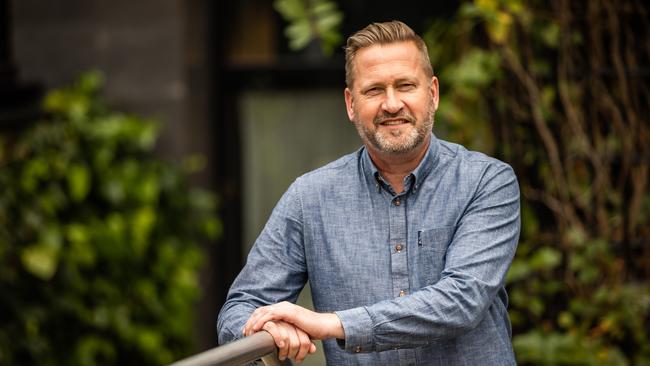
Weeks later, course facilitator and Breakthrough executive director John Mannion asked Mumford what had stopped his suicidal thoughts. “He just said ‘you and your course’. That puts hairs up on your arm because you realise how vital this course is,” Mannion says.
“It’s not just about learning the skills and the understanding of how to talk to people and notice warning signs, but also people learning a whole range of different skills for looking after your own wellbeing. That is the narrative we’re hearing so much more.
“As men we have historically been rubbish at having these conversations. When you consider that seven out of the nine suicides everyday are men, the question is how do we change that narrative? We’re starting to see this shift and this change; seeing people in authority showing vulnerability.
“By Sam Mumford bravely sharing his story, that’s powerful as well because that normalises the conversation. We all find challenges at points in time but it’s then knowing how do we catch it at the right time. That’s the next challenge. What we are seeing during these courses is this confidence in people reaching out and having that mental health conversation and feeling safe and empowered to do so.”
More than 80 islanders have completed the two-day course, with hopes that number will reach 100 before the end of the year.
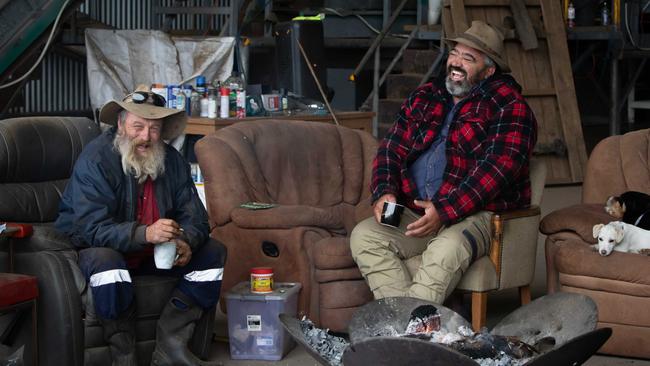
Mental health also came into sharp focus for many islanders after the tragic suicide of much-loved sheep farmer and community leader Simon “Dippa” Wheaton in August last year.
Simon’s wife Eloise, who spoke with SA Weekend earlier this year, initiated the painting in blue of a tree on the main road in and out of Kingscote, donned with the R U OK moniker.
Son Toby grew a Mullet for Mental Health to raise funds for the Black Dog Institute and mate Clayton Willson this month completed a 67km run around the Dudley Peninsula for Breakthrough.
Another friend Lenny Deacon, who raised more than $45,000 for Breakthrough in February during his 24-hour Shearathon, is planning another fundraising event with multiple shearers next year.
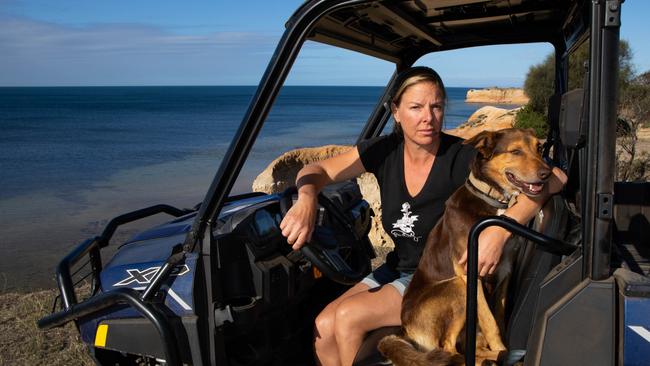
Almost three years on from the bushfire tragedy, service providers are acutely aware that islanders are entering a “danger period” related to post traumatic stress disorder.
“The research shows that PTSD generally presents itself 3-5 years after a disaster like this,” Mannion says. “Just when people have finished the recovery work and they look up for help, that’s generally the time when crisis services start to withdraw from an area.
“We know many islanders are still struggling and that’s why having more people in the community that can actually look out for the signs of deterioration, the signs that people are struggling or do need to access support, we’ll have more people trained to have those initial conversations.
“That’s vital in a rural community because if you have to wait six months to see a psychiatrist or psychologist to get an appointment, these conversations can be happening in the community already.
“The ability just to sit, to not feel lonely, to not feel isolated, to feel validated, to realise I’m actually not on my own, they’re all very powerful things as part of our own recovery.”
Kangaroo Island Health Advisory Council presiding member Darren Keenan says Mumford’s story is an important cautionary tale. “We’ve found that once victims of bushfire get their house back up and their farm working again, then they’re back to reality,” Keenan says.
“And reality is not actually what it was before. This is the new normal now and they might not actually like the new normal. So that’s a risk. The other thing is that people have been bloody busy.
“When you’re busy you don’t have time to stop and reflect and have all those thoughts.
“When they stop being busy, their brain has space to start to process this other stuff. What we do know is mateship, collegiality, social interaction, is what is recommended as part of any mental health counselling program.
“I always say people behave best when there’s adversity and that’s what the community did. We pulled together and we looked after each other.”
“The tragedy of the fires has given us the opportunity to build the capacity of the community to help their family and friends.
“If there are a group of mental health first aiders out there, they’ll hopefully be in the right place at the right time.
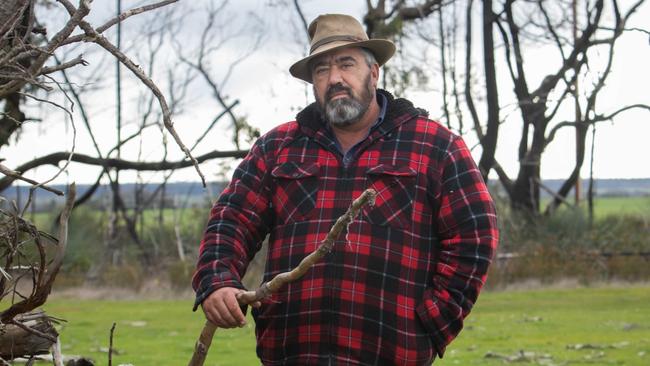
As a leader in the community, Mumford says he now believes he was too focused on taking on everyone else’s pain rather than dealing with his own. “I’m a bit of an Agony Aunt here,” he says. “When people have a problem, they come to me to sort it out. But there weren’t many times that someone would come up to me and ask the same. People just think I’m the big, fat strong guy who has no worries.
“It shows that people never know what is going on underneath if they don’t ask.
“The simple fact is that I wasn’t thinking. All you’re thinking is: this hurts, I can fix it – I don’t want to hurt anymore.
“And it’s being incredibly selfish because that’s how I felt. It was really that painful.
“What worried me was, are my kids thinking the same things that I’m thinking? That’s one of the things that really kicked me into gear because I was worried if they were feeling like I was thinking, I didn’t want to cross that bridge.
“That’s why I really opened up and said this is what is going on. I just tried to get the ball rolling so I knew that they’d be comfortable in talking to me if they were feeling the same way. I don’t keep any secrets anymore. I’m an open book. I feel stupid that I allowed it to get as far as it did but I’m proud to say I haven’t had those thoughts for a long time now. I haven’t pissed off anywhere near enough people in my life yet!”
Kate Brooksby, an island resident and community wellbeing officer funded through Wellbeing SA, who works for local service provider Junction, has recently been certified as a mental health first aid trainer and will begin running courses from October.
“The course is not about diagnosing a mental health issue – it’s more like general first aid,” Brooksby says. “It’s that first response and breaking down some of that stigma and increasing understanding.
“It’s not a magic wand but it helps us care for our community better and increases the knowledge so that people can do that.
“We know that community members are going to seek out their colleagues more than a clinician. It’s your mate at the sports club who knows what’s happening in your life that’s going to notice things that might not be so good and ask. We’ve seen how this course gives them confidence to do that and knowing what to do with that information.”
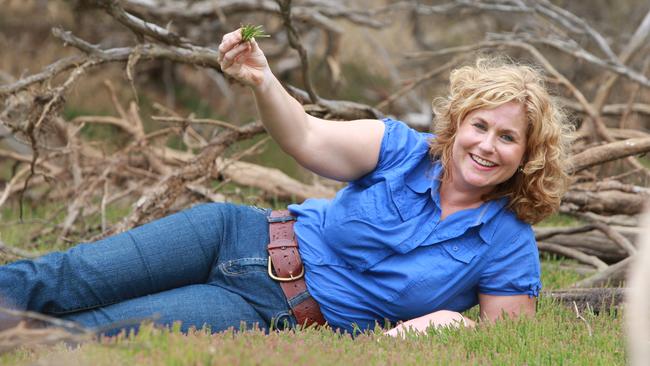
Brooksby and Junction’s KI Community Centre site co-ordinator Maree Baldwin have been vital links between community needs and the island’s service providers during the fire recovery period. They have co-ordinated numerous initiatives on the island designed to bring the community together.
“Whether it be a simple art and craft course or supporting bigger events like the Black Dog ride, the Humans of KI Film Festival, R U OK Day events, as well as Breakthrough’s Men’s Meals talks and Barn Yarn gatherings, we’ve seen the community really rally,” Baldwin says.
“We also ran a teen mental health first aid course that was offered to all Year 12 students on the island. We immediately received feedback of a student who sought advice and help for a colleague who they noticed was struggling.”
The rebuild of Kangaroo Island’s country and its people is an ongoing process of hard work and healing.
Its ebbs and flows are survived only through the galvanisation of the community and the strength of mateship in a crisis.
For the latest on the remarkable work being done on the island to rebuild the community, watch the video at: breakthroughfoundation.org.au/kangaroo-islands-barn-yarn-bbq/
If you or someone you know is in crisis, please contact:
■ Lifeline: 131 114 or lifeline.org.au
■ Suicide Call Back Service: 1300 659 467 or suicidecallbackservice.org.au
■ Beyond Blue: 1300 224 636 beyondblue.org.au/forums
■ MensLine Australia: 1300 789 978 or mensline.org.au




